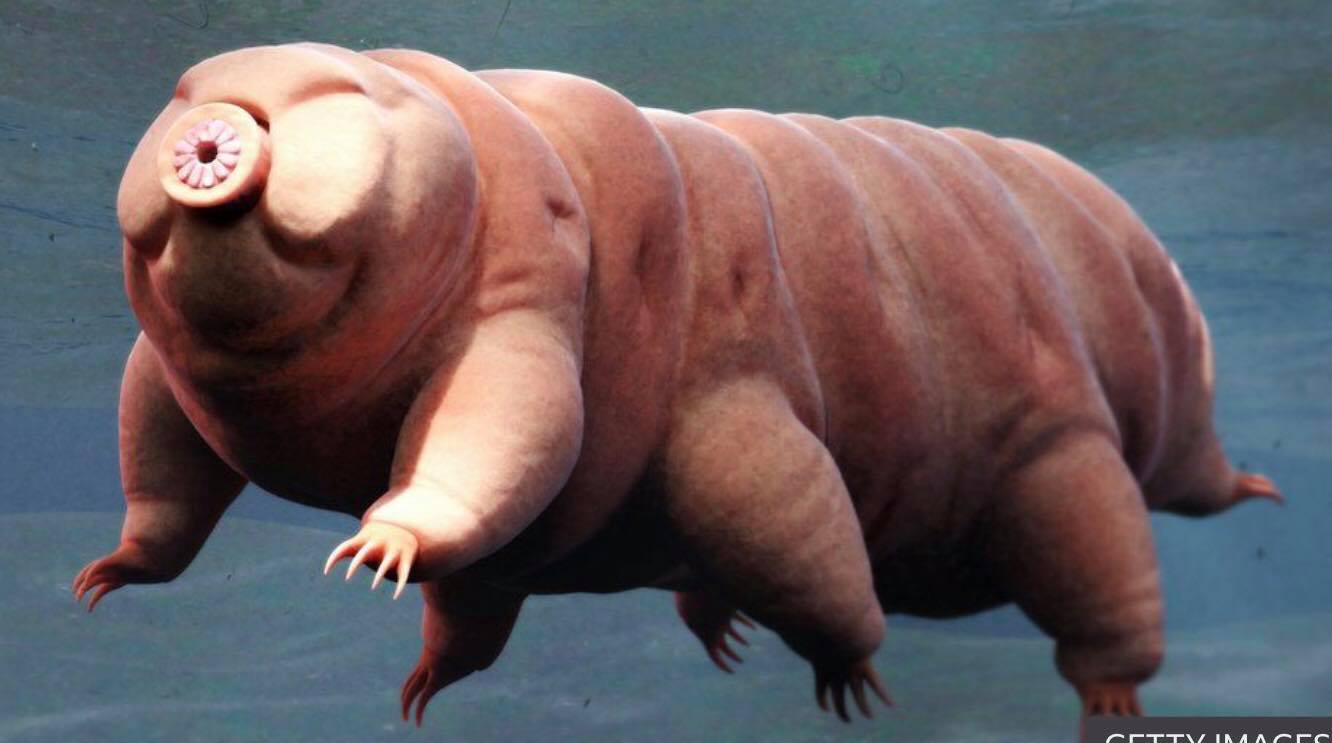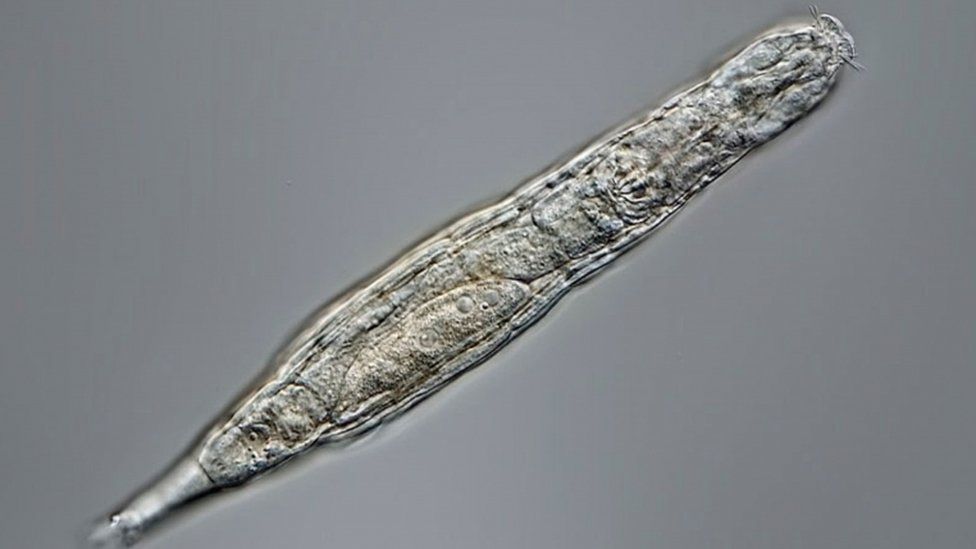It looks like you're using an Ad Blocker.
Please white-list or disable AboveTopSecret.com in your ad-blocking tool.
Thank you.
Some features of ATS will be disabled while you continue to use an ad-blocker.
share:
Scientists Revive Tiny Animals Frozen for 24,000 Years In Arctic Permafrost
These little guys could even reproduce after all that time!!
Wonders will never cease
The dating looks pretty solid
This could be the start of serious deep space travel ambitions for real.
HERES A LINK to the article, its only a 5 minute read.
Whaddya think of this ATS? Could be the start of some very interesting scientific studies
These little guys could even reproduce after all that time!!
Some 24,000 years ago, a group of microscopic animals called bdelloid rotifers became frozen into a layer of Siberian permafrost and entered a state of suspended animation. Now, in a microbial version of Encino Man, scientists have discovered that the ancient rotifers could not only be revived after their eon-spanning nap, they could also successfully produce offspring.
Wonders will never cease
The mind-boggling discovery “constitutes the longest reported case of rotifer survival in a frozen state” and “is of great interest not only for evolutionary biology but also for practical purposes of cryobiology and biotechnology,” according to a study published on Monday in Current Biology.
The dating looks pretty solid
The team used radiocarbon dating, along with the depth of the core layer, to estimate that this permafrost froze some 24,000 years ago, during an era when mammoths still wandered the Siberian wilderness. Microbes are not able to move vertically through ice or ice-cemented ground, according to the study, which means that these ancient organisms are as old as the permafrost they were found in.
This could be the start of serious deep space travel ambitions for real.
Unraveling the mysteries of cryobiosis in these tough creatures will shed light on their amazing abilities, but this research also has implications beyond the world of microbes. In science fiction, cryopreservation offers an opportunity for characters to dramatically extend their lifespans so that they can voyage across the universe and effectively travel through time. While these visions are a long way from reality, Malavin said that his team’s work with frozen microbes presents an exceptional opportunity to investigate the basic foundations of long-term cryopreservation in a human context.
HERES A LINK to the article, its only a 5 minute read.
Whaddya think of this ATS? Could be the start of some very interesting scientific studies
This is cool.
Hopefully they don't have to bury the site under a swingset while the black goo swims around their eyeballs.
I'll call Mulder.
Hopefully they don't have to bury the site under a swingset while the black goo swims around their eyeballs.
I'll call Mulder.
Hopefully, Bill Gates will soon open a new theme park called ROTIFER WORLD...where 21st century families can visit, walk among and observe
long-extinct, microscopic organisms in their natural prehistoric environment.
a reply to: SecretKnowledge
When these virology and biology “experts” were children their parents kept telling them not play with fire or they will get burned.
If they didn’t listen to their parents there is no hope for any of us now that they have their big boy pants on.
When these virology and biology “experts” were children their parents kept telling them not play with fire or they will get burned.
If they didn’t listen to their parents there is no hope for any of us now that they have their big boy pants on.
a reply to: SecretKnowledge
Wow, that is really interesting!
I found this part to be interesting..
Thanks for sharing this article
Wow, that is really interesting!
I found this part to be interesting..
As the tiny aniamls were thawed back in the laboratory, many of them became active again, and astonishingly, some were able to asexual reproduce in a process called parthogenesis. A new generation of clone offspring were thereby brought into the world by parents 24,000 years older than them.
Thanks for sharing this article
originally posted by: SecretKnowledge
This could be the start of serious deep space travel ambitions for real.
Have we even perfected cryopreservation yet? Last i knew slow freeze ruptures cell membranes and cryoprotective agents introduce toxicity and have the potential for contamination.
originally posted by: CrazyBlueCat
a reply to: SecretKnowledge
Wow, that is really interesting!
I found this part to be interesting..
"As the tiny aniamls were thawed back in the laboratory, many of them became active again, and astonishingly, some were able to asexual reproduce in a process called parthogenesis. A new generation of clone offspring were thereby brought into the world by parents 24,000 years older than them."
Thanks for sharing this article.
Well, they've got Kenny Rogers beat for being old parents. The first thing I thought about when reading this was The Planet Of The Apes, where Charlton Heston opens the movie and his shipmates are in hibernation. This could seriously help space travel to faraway systems if it can be worked out.
originally posted by: NorthOfStuff
a reply to: SecretKnowledge
When these virology and biology “experts” were children their parents kept telling them not play with fire or they will get burned.
If they didn’t listen to their parents there is no hope for any of us now that they have their big boy pants on.
Thats one way of looking at it , glass half full kinda way.
No offence to you though
Thing is you don't progress without taking chances , What if Telsa and Edison didnt experiment because of fear for electricity.
Or Galileo Galilei dropped his research due to fear for the vatican.
Learning and discovering are wonderful things.
Could you put people with organ failure in Cryo stasis ? until a Donor is available ?
The 'Moss Piglets' as they are colloquially named are already on the Moon due to some Israely craft crashing there earlier this year.
Link to BBC article with photo's of them
They are soooo cute!

Rainbows
Jane
Link to BBC article with photo's of them
They are soooo cute!

Rainbows
Jane
a reply to: TheGreazel
No offence taken!
I’m an engineer so the glass is always full of something. Half beer half air, all beer, all air
No offence taken!
I’m an engineer so the glass is always full of something. Half beer half air, all beer, all air
edit on 6 9 2021 by NorthOfStuff because: (no reason given)
a reply to: SecretKnowledge
After all the sci-fi novels I've read and movies I've seen....
I say do it.
After all the sci-fi novels I've read and movies I've seen....
I say do it.
a reply to: TheGreazel
Better yet, can organs from donors be frozen for later use.
I'm thinking yes. As far as a human, I don't know. I would think psychologically it would be damaging.
Better yet, can organs from donors be frozen for later use.
I'm thinking yes. As far as a human, I don't know. I would think psychologically it would be damaging.
Here's a picture of the star of the article;

Resilient little critters.

Resilient little critters.
It is extraordinary and life finds a way,...
However, it would have been prudent to check with the rest of the world, before reviving them.
Like another said earlier..... What could go wrong?
However, it would have been prudent to check with the rest of the world, before reviving them.
Like another said earlier..... What could go wrong?
edit on 10-6-2021 by charlyv because: spelling , where caught
originally posted by: TheGreazel
Could you put people with organ failure in Cryo stasis ? until a Donor is available ?
I think this little fellers coming back to life as it were, could well be the start of 'deep sleep'.
new topics
-
Federal law trumps state and local law every time
Social Issues and Civil Unrest: 10 hours ago
top topics
-
Federal law trumps state and local law every time
Social Issues and Civil Unrest: 10 hours ago, 16 flags
active topics
-
Federal law trumps state and local law every time
Social Issues and Civil Unrest • 28 • : xuenchen -
Well, here we go red lines crossed Biden gives the go ahead to use long range missiles
World War Three • 390 • : Freeborn -
Anyone like the Scorpions?
Music • 21 • : belkide -
Comcast dumping MSNBC
Mainstream News • 36 • : Kaiju666 -
Post A Funny (T&C Friendly) Pic Part IV: The LOL awakens!
General Chit Chat • 7831 • : DBCowboy -
DOJ Special Counsel Robert HUR Says JOE BIDEN Can Be ARRESTED After Jan 20th 2025.
Above Politics • 25 • : Kaiju666 -
-@TH3WH17ERABB17- -Q- ---TIME TO SHOW THE WORLD--- -Part- --44--
Dissecting Disinformation • 3380 • : RelSciHistItSufi -
Remember These Attacks When President Trump 2.0 Retribution-Justice Commences.
2024 Elections • 94 • : xuenchen -
I thought Trump was the existential threat?
World War Three • 77 • : EyeoftheHurricane -
The Acronym Game .. Pt.4
General Chit Chat • 993 • : JJproductions
